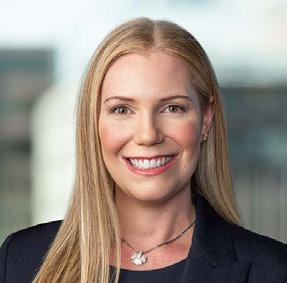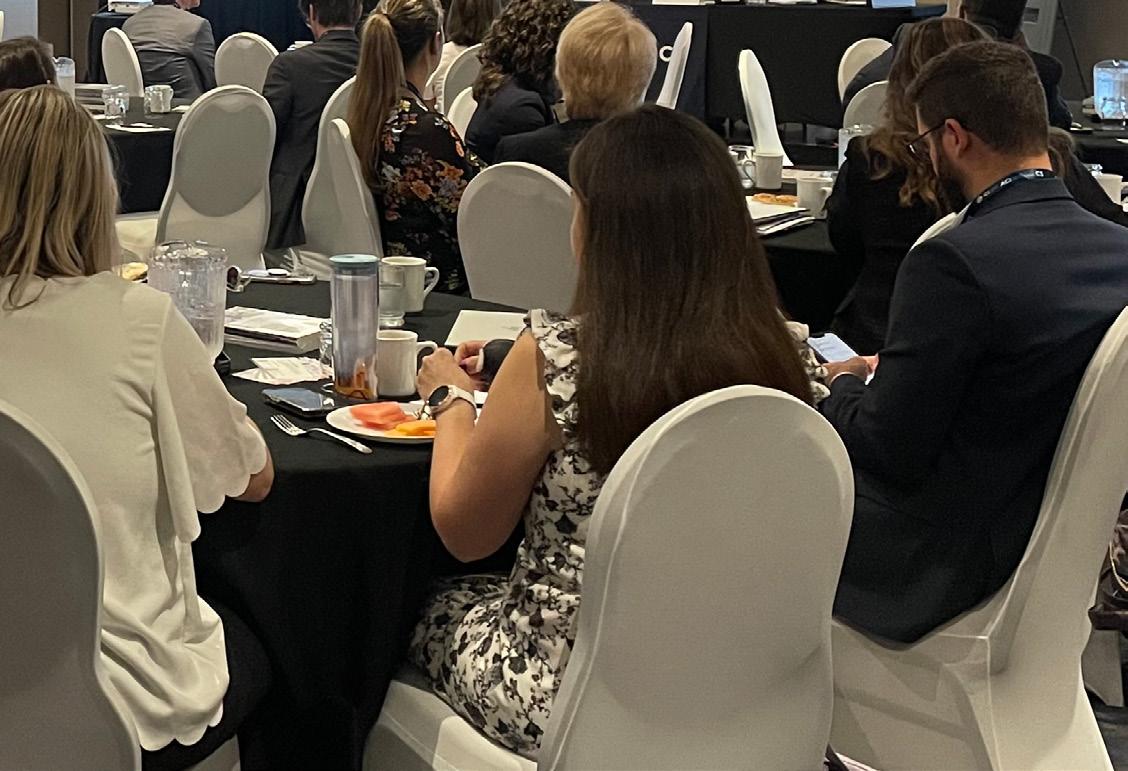American Conference Institute’s 42 nd

Stacy Cline Amin Partner
Morrison & Foerster (Former Chief Counsel, U.S. FDA)

Kurt Karst Director Hyman, Phelps & McNamara, P.C.
Cĉ Understanding the Structure of FDA and the Roles of the Three Major Agency Centers: CDER, CBER, and CDHR
ĉ Navigating the Application and Approval Processes for Drugs and Biologics
ĉ IP Overview for Drugs and Biologics: Hatch-Waxman, BPCIA, Trademarks, and More
ĉ Clarifying the Clinical Trial Process for Pharmaceutical Products
ĉ Unveiling the Importance of Current Good Manufacturing Practices (cGMPs) in the Post Approval Process
ĉ Recognizing the Pivotal Role of Labeling in the Drugs and Biologics Approval Process
ĉ Grasping the Essentials of Advertising, Marketing and Promotion of Drugs and Biologics
ĉ Comprehending the Protocols of Adverse Events Monitoring, Signal Detection, Product Withdrawals, and Recalls

REGISTER NOW AmericanConference.com/FDABootCamp • 888 224 2480 Part of C5 Group’s LIFE SCIENCES GLOBAL SERIES EARN CLE/ETHICS CREDITS
2024 | SpringHill
Manhattan Times
March 13–14,
Suites NY
Square South | New York, NY
Program highlights:
Join us for Pre- and PostConference Workshops: A Calendar-alt March 12th, 2024 FDA 101: A Guide to Agency Structure, Jurisdiction, Regulation, and Applicable Laws B Calendar-alt March 12th, 2024 Medical Devices, Combination Products, and Companion Diagnostics Boot Camp: A Review of FDA Guidelines and Regulations
Calendar-alt March 14th, 2024 Hatch-Waxman and BPCIA in the Trenches: Exclusivity and Bioequivalency Working Group With 1 hour Ethics Bonus
Co-Chairs
Distinguished
Training in core regulatory concepts for life sciences attorneys, business executives, and policy analysts
MEDIA PARTNER:
For nearly 20 years, ACI’s FDA Boot Camp has served as the training grounds for life sciences attorneys and executives to master the fundamentals of FDA regulations. This is your opportunity to join their ranks.
Recent news stories, high profile enforcement actions and mounting litigation have made it clear that all eyes are currently on FDA-regulated products. If you are an attorney without a regulatory background or practice, or a life sciences executive who deals with FDA-regulated products, it is critical that you have a familiarity with the fundamentals of FDA regulation and the core concepts underpinning the commercialization process for drugs and biologics that are governed by the FDA.
For this reason, ACI’s FDA Boot Camp returns for its 42nd iteration — LIVE IN NEW YORK CITY — with the continued intent of providing you with an essential working knowledge of core FDA concepts, and real-world examples that will help you to excel in your everyday practice.
Our program features an esteemed panel of top FDA regulatory leaders who will generously share their wealth of knowledge and provide invaluable insights on:
ç The organization, jurisdiction, functions, and operations of FDA
ç The essentials of the approval process for drugs and biologics
ç The role of the Hatch-Waxman Act in the patenting of drugs and biologics
ç Clinical trials for drugs and biologics

ç Labeling in the drug and biologics approval process
ç cGMPs and other manufacturing concerns relative to products liability
ç Proactive adverse events monitoring and signal detection
ç Recalls, product withdrawals, and FDA oversight authority
2 | #FDABootCamp #ACIConferences LINKEDIN Pharmaceuticals, Biotech & Life Sciences: Legal, Regulatory, and Compliance Professionals
Maximize your knowledge and networking experience by attending one or more of our workshops:
PRE-CONFERENCE WORKSHOP A FDA 101: A Guide to Agency Structure, Jurisdiction, Regulation, and Applicable Laws
PRE-CONFERENCE WORKSHOP B Medical Devices, Combination Products, and Companion Diagnostics Boot Camp: A Review of FDA Guidelines and Regulations
POST-CONFERENCE WORKSHOP C Hatch-Waxman and BPCIA in the Trenches: Exclusivity and Bioequivalency Working Group +1 Hour Ethics Bonus
A
B
C
Co-Chairs


Stacy Cline Amin Partner
Morrison & Foerster (Former Chief Counsel, U.S. FDA)
Kurt Karst Director Hyman, Phelps & McNamara, P.C.
Distinguished Faculty



Christopher M. Mikson, M.D. Partner
DLA Piper LLP (US)
Abeba Habtemariam Partner
Arnold & Porter LLP
Elizabeth Richards Partner Latham & Watkins LLP






Benjamin Zegarelli Of Counsel
Mintz, Levin, Cohn, Ferris, Glovsky and Popeo, P.C.
Jonathan B. Roses Shareholder Wolf, Greenfield & Sacks, P.C.
Jessica Tierney Of Counsel
Jones Day
Seth Mailhot Partner Husch Blackwell LLP
Sonia Nath Partner Cooley Joshua Oyster Partner Ropes & Gray LLP






Marc J. Scheineson, Esq. Partner
Alston & Bird LLP
Jennifer Bragg Partner
Skadden, Arps, Slate, Meagher & Flom LLP
John D.W. Partridge Partner Gibson, Dunn & Crutcher LLP
Bryant M. Godfrey Counsel Foley Hoag LLP
Bryan C. Diner Partner
Finnegan, Henderson, Farabow, Garrett & Dunner LLP
Jason F. Conaty Counsel, Global Regulatory Hogan Lovells US LLP


Samantha Hong Partner
Kleinfeld, Kaplan & Becker LLP
Susan Lee Partner
Goodwin Procter LLP




Maarika L. Kimbrell Partner
Morgan, Lewis & Bockius LLP
James C Shehan (Jim)
Senior Counsel |Chair, FDA Regulatory Practice Lowenstein Sandler LLP
Julia Post Of Counsel
Covington & Burling LLP
Cristopher Noyes Partner WilmerHale

C5 celebrates 40 years of excellence! We are thrilled to have provided exceptional conference experiences globally with our outstanding team, speakers, sponsors, partners, and attendees. To mark this milestone, we're launching a new logo which represents our commitment to innovation, growth, and excellence, represented by the five Cs of C5: Current, Connected, Customer-Centric, Conscientious, and Committed.
Looking back on 40 years, we are grateful for our achievements—hosting global conferences, uniting industry leaders, and supporting business growth. However, we are not done yet! We are committed to pushing boundaries and creating impactful experiences and we're excited for the next 40 years of success.
REGISTER NOW AmericanConference.com/FDABootCamp • 888 224 2480 Part of C5 Group’s LIFE SCIENCES GLOBAL SERIES
2023 FACULTY LIST
12th, 2024
9:00 AM–12:30 PM (10:30 AM–11:00 AM Break)
AFDA 101: A Guide to Agency Structure, Jurisdiction, Regulation, and Applicable Laws
Microphone-alt Christopher M. Mikson, M.D., Partner, DLA Piper LLP (US)
Sonia Nath, Partner, Cooley
+1
1:30 PM–5:00 PM (2:30 PM–3:00 PM Break)
B
Medical Devices, Combination Products, and Companion Diagnostics Boot Camp: A Review of FDA Guidelines and Regulations
Microphone-alt Abeba Habtemariam, Partner, Arnold & Porter LLP
This workshop provides a basic overview of FDA regulations and will prepare you for the more in-depth discussions that will take place throughout the conference. Topics addressed during this workshop will set the stage for the main conference by helping you thoroughly comprehend the structure of FDA and obtain a basic understanding of the pre-approval, approval, and post-approval processes. This session also provides a built- in hour of ethics credit. Topics of discussion will include:
• Examining the FDA’s structure, authority, and organization
• The 3 major FDA centers and their roles
» CDER (Drug)
» CBER (Biologics)
» CDRH (Device)
• Reviewing major FDA regulations and applicable laws
• Defining drugs, biologics, and devices
• Understanding the role of labeling with respect to these definitions
• Differentiating types of drug applications (INDs, NDAs, and ANDAs)
• Exploring the clinical trials process
• Investigating biological products and biosimilars
• Evaluating post-market dilemmas and enforcement
• Understanding recalls and withdrawals
• Examining recent developments at FDA
• FDA’s policies and procedures
» Administrative Procedures Act
• Working with the FDA through formal and informal dispute resolution mechanisms
• Analyzing ethical dilemmas that may occur throughout various stages of interaction with the FDA, including the approval process related to the disclosure of adverse information

12:30 PM–1:30 PM Lunch
Elizabeth Richards, Partner, Latham & Watkins LLP
This workshop will provide an introduction and in-depth overview of medical devices, combination products, and companion diagnostics as well as the FDA regulations which govern these products.
Topics of discussion will include:
Medical Devices
• Reviewing the history of FDA device regulations
• Examining the basics of device classification and the FDA’s review process
• Analyzing the clinical trials process for medical devices
• Assessing strategies to obtain clinical data
• Determining premarket approvals
• Exploring the 510(k)-clearance process
• Discussing key regulatory requirements, information, and concepts
Combination Products
• Defining the requirements for combination product classification and approval
• Selecting the proper regulatory pathway
• Exploring the Request for designation (RFD) process and the newly-created pre-RFD process
• Determining the role of the Combination Product Policy Council and agencies regulating combination products
• Examining existing cGMP’s for combination products
Companion diagnostics
• Exploring the regulations of laboratory developed tests (LDTs)
• Examining the approval process for in vitro diagnostic devices (IVDs) and Next Generation Sequencing (NGS) IVDs
• Utilizing companion diagnostics via smart technologies
4 | #FDABootCamp #ACIConferences LINKEDIN Pharmaceuticals, Biotech & Life Sciences: Legal, Regulatory, and Compliance Professionals
Hour Ethics Bonus
Break
March 13th, 2024
8:15
Co-Chairs’ Opening Remarks
Microphone-alt Stacy Cline Amin, Partner, Morrison & Foerster, (Former Chief Counsel, U.S. FDA) Kurt Karst, Director, Hyman, Phelps & McNamara, P.C.
EXPLORING NEW FDA INITIATIVES
Our co-chairs will delve into the recent changes made to the Food Drug & Cosmetic Act by the FDA User Fee Reauthorization Act of 2022, and the Food and Drug Omnibus Reform Act of 2022 (FDORA), including new provisions for clinical trials and accelerated approval. In addition, they will highlight recent litigation against FDA and pending legislation of significance.
The Pre-Approval and Approval Process
9:15
Navigating the Approval Process for Drugs and Biologics
Microphone-alt Jason F. Conaty, Counsel, Global Regulatory, Hogan Lovells US LLP
The Drug Review Process
• Reviewing the fundamentals of applications; from submission, through filing and beyond
• Making sense of PDUFA Goals, fast track, break through status, and other process enhancements
• Use of administrative appeals
Rx Drugs (Small Molecules)
• Understanding the difference between “new drugs” and other drugs
• Examining the research, development, and approval process for new drugs
• Dissecting the investigational new drug application (IND) vs. the new drug application (NDA)
Biological Products (Large Molecules)
• What are biological products in relation to traditional drugs?
• Deciphering the biologics license application (BLA)
• How do the research, development, and approval process for biological products differ from the process for new drugs?
• Exploring key similarities and differences between the drug and biological product schemes
NDAs and BLAs
• Differentiating between 505(b)(1)s, 505(b)(2)s, and BLAs
• Identifying applications for fixed-dose combination drugs
• Distinguishing complex molecules regulated through NDAs from from small molecules
• Examining standards for approvals
• REMS
• Gaining comprehensive insight into the multitude of sponsor meetings, their timing, purposes, and the overarching procedural aspects
10:15 Morning Break
10:45
Exploring FDA’s Expedited Programs: Applicability and Eligibility
Microphone-alt Jessica Tierney, Of Counsel, Jones Day
Benjamin Zegarelli, Of Counsel, Mintz, Levin, Cohn, Ferris, Glovsky and Popeo, P.C.
• Distinguishing among the different FDA programs for expedited review and approval of drug products
• Evaluating the criteria for eligibility, benefits, and limitations of each program
• Understanding accelerated approval, surrogate and intermediate clinical endpoints
• Assessing the breakthrough therapy, regenerative medicine advance therapy (RMAT), and fast track designation programs
• Reviewing priority review
• Factoring expedited programs into your drug development strategy
• Examining recent changes to FDA’s Accelerated Approval program
12:00 Lunch Break
12:45
Analyzing the Regulatory Landscape of OTC (Over-the-Counter) Drugs
Microphone-alt Samantha Hong, Partner, Kleinfeld, Kaplan & Becker LLP
• Understanding the concept of “OTC” (OTC-ness)
• Examining the OTC Review and monographs
• Differences between approved and monographed OTC drug products
• OTC Monograph Drug User Fee Program (OMUFA)
• FDA’s Proposed Rule: Nonprescription Drug Product with an Additional Condition for Nonprescription Use (ACNU)
• Understanding How FDARA and the 21st Century Cures Act are impacting drug approvals through new evidentiary requirements
REGISTER NOW AmericanConference.com/FDABootCamp • 888 224 2480 Part of C5 Group’s LIFE SCIENCES GLOBAL SERIES
1:30
Clarifying the Clinical Trial Process for Drugs and Biologics
Microphone-alt Julia Post, Of Counsel, Covington & Burling LLP
• Overview of clinical trials and how they are used (including different phases)
• Identifying the different parties involved (sponsors, investigators, CROs, etc.)
• Understanding human research protection (ICF, IRB)
• Enforcement
• Review of the “Right to Try” laws and their requirements during the clinical trials process
• Examining new FDA requirements for Diversity Actions Plans for clinical trials
• Delving into the categories of meetings available both prior to filing an IND and at various stages throughout a clinical trial
» What type of meeting can you get? (in-person/written response)
» What should you submit?
» How to prepare for it?
2:30 Afternoon Break
IP Overview for Drugs and Biologics: Hatch-Waxman, BPCIA, Trademarks, and More
3:00
PART 1 – Patents and Related IP Protections and Mechanisms
Microphone-alt Jonathan B. Roses, Shareholder, Wolf, Greenfield & Sacks, P.C.
Patent Protection for Drugs and Biologics
• Summarizing the patenting process for drugs and biologics
• Patentability requirements and differing patent strategies for drugs and biologics
• Strategies for building patent protection for drugs and biologics
• Applying for and achieving extension of patent term for time spent in the drug approval process
» Patent Term Extension (“PTE”)
» Patent Term Adjustment (“PTA”)
• Reviewing the 271(e)(1) “safe harbor” provision
• Distinguishing the patenting process for drugs from that of biologics
• Identifying the respective roles of the FDA and the PTO in the protection of drugs and biological products
• Patent validity challenges and infringement proceedings for drugs and biologics under the Hatch-Waxman Act and Biologics Price Competition and Innovation Act (BPCIA)
3:45
PART 2 – Hatch-Waxman and BPCIA Fundamentals: Understanding Follow-On Products and the Rules for Generic Entry
Microphone-alt Maarika L. Kimbrell, Partner, Morgan, Lewis & Bockius LLP
Drugs
• Overview of Hatch-Waxman and reforms
» 30-month stay; patent extensions
» ANDA filer patent challenge and competitive generic therapy 180-day exclusivities
• Comparing the NDA, 505(b)(2), and ANDA (Abbreviated New Drug Application) drug approval routes
» Reviewing fundamentals of applications
• Exploring the ANDA Paragraph IV Certification, and response to Notice Letters
• Examining ANDA Standards for approval and the concepts of sameness and bioequivalence
• Special considerations: local acting drugs, labeling carve outs and other nuances
» Understanding the role of the Orange Book in the drug approval process
» Listings, de-listings and use codes
• Market exclusivities and protection
• Identifying the different types of exclusivities
» Regulatory exclusivity (FDA)/ (data) exclusivity
NCE (new chemical entity)
» 5 years data exclusivity
Indication (new indication or use)
» 3 years marketing exclusivity
NDF (new dosage formulation)
» 7 years marketing exclusivity
ODE (orphan drug exclusivity)
» 6 months marketing exclusivity
PED (pediatric exclusivity)
Biologics
• Overview of biosimilar legislation and regulations, i.e., Biologics Price Competition and Innovation Act of 2009 (BPCIA)
• Understanding the rationale for safety and efficacy concerns surrounding second generation biologics
• Exploring the concepts of “biosimilarity” or “interchangeability”
• FDA rule-making and guidance relative to biosimilars
• Other points for consideration: substitution, naming, patents, and additional nuances
• Examining biosimilar exclusivities
• “Shall we dance” — weighing the pros and cons of participating in the patent dance
• Deciding when to provide notice of commercial marketing
6 | #FDABootCamp #ACIConferences LINKEDIN Pharmaceuticals, Biotech & Life Sciences: Legal, Regulatory, and Compliance Professionals
4:45
Drugs and Biologics Labeling: Appreciating the Importance of the Final Step of the Approval Process
Microphone-alt Susan Lee, Partner, Goodwin Procter LLP
The labeling of the drug/biologic is the final stage of the approval process. The label controls what you can do post-approval and as such it is the point of transition between the approval process and post-approval world.
• Labeling overview: key regulatory requirements, information, and contents
• Exploring the review process for labeling
• Incorporating clinical trial data on the label
• Appreciating the influence of final labeling on the scope of post-market activities
• Amending labeling post-marketing
• Using labeling as a defense in products liability litigation
• Exploring label carve outs
• Discussing the requirements for skinny and narrow labeling
5:30 Conference Adjourns to Day Two
Continuing Legal Education Credits
EARN CLE CREDITS
Accreditation will be sought in those jurisdictions requested by the registrants which have continuing education requirements. This course is identified as nontransitional for the purposes of CLE accreditation.
ACI certifies this activity has been approved for CLE credit by the New York State Continuing Legal Education Board.
ACI certifies this activity has been approved for CLE credit by the State Bar of California.
ACI has a dedicated team which processes requests for state approval. Please note that event accreditation varies by state and ACI will make every effort to process your request.
Questions about CLE credits for your state? Visit our online CLE Help Center at www.americanconference.com/accreditation/cle/
MAIN CONFERENCE DAY TWO March 14th, 2024
8:40
Co-Chairs’ Remarks and Recap of Day One
Microphone-alt Stacy Cline Amin, Partner, Morrison & Foerster, (Former Chief Counsel, U.S. FDA)
Kurt Karst, Director, Hyman, Phelps & McNamara, P.C.
8:45
cGMPs: Discovering the Unique Role of Current Good Manufacturing Practices (“cGMPs”) in the Post approval Process
Microphone-alt Seth Mailhot, Partner, Husch Blackwell LLP
Joshua Oyster, Partner, Ropes & Gray LLP
• Examining cGMPs (current Good Manufacturing Practices) and the scope of their importance in pharmaceutical/biological product commercialization
• Factoring cGMPs into the scope of the FDA’s authority
• Exploring the scope of the FDA’s cGMP Initiative and the concept of “risk-based” cGMPs
• Conducting laboratory investigations in relation to cGMPs
• Understanding the influence of cGMPs in products liability litigation
• Evaluating the costs and impact of enforcement actions
Advertising, Promotions, and Related First Amendment Concerns
9:45
PART 1 – Drug and Biologics Advertising and Promotion
101
Microphone-alt Marc J. Scheineson, Esq., Partner, Alston & Bird LLP
• Overview of laws and regulations controlling the advertising, marketing, and promotion of prescription drugs and biologics
» 21 CFR Sections 202.1, 352(n), 314.81(b)(3); Section 352(n) of FD&CA
» Guidance documents
• Exploring the role of the Office of Prescription Drug Promotion (OPDP)
» What duties and responsibilities is DDMAC charged with?
» What are its enforcement capabilities and jurisdiction?
• Identifying the role of the FTC in the advertising and promotion of drugs
» SEC?
• Advertising requirements for prescription v. nonprescription products
REGISTER NOW AmericanConference.com/FDABootCamp • 888 224 2480 Part of C5 Group’s LIFE SCIENCES GLOBAL SERIES
• Reviewing the steps which OPDP takes for the review of launch campaigns and promotional materials
» Overview of the promotional materials submission and review process
• What constitutes a launch?
• What defines an advertisement?
» What information must a drug advertisement include?
• Exploring the role of the label in advertising
10:30 Morning Break
11:00
PART 2 – Exploring the Subtleties and Safe Zones of Off-Label Communications
Microphone-alt Jennifer Bragg, Partner, Skadden, Arps, Slate, Meagher & Flom LLP
John D.W. Partridge, Partner, Gibson, Dunn & Crutcher LLP
• Clarifying FDA’s current position on First Amendment and off-label promotion
» The 21st Century Cures Act
» FDAMA 114
• What to expect concerning proposed legislation, rules changes and Citizen Petitions
• Cases and controversies: state AG actions and private tort claims
11:45
Preparing for the Worse: Adverse Events Monitoring, Pharmacovigilance, Risk Management, and Recalls
Microphone-alt James C Shehan (Jim), Senior Counsel |Chair, FDA Regulatory Practice, Lowenstein Sandler LLP
• What is pharmacovigilance?
• How pharmacovigilance uses adverse event reports
» Direct versus indirect reports
» Causality assessments
» Labeling changes
» Pre-and post-market ADE reporting requirements
» How regulatory agencies use ADE reports
• Exploring protocols for Risk Evaluation and Minimization Strategies (REMS)
• Understanding the role of risk evaluation in the approval process
• Identifying risk minimization tools
• Enforcing ADE reporting and REMS requirements
• Examining the relevance to product liability risks, including innovator and co-promoter liability risks
• What is the FDA’s recall and oversight authority (overview of 21 CFR Part 7)?
» Guidance versus regulation
» Voluntary recalls versus mandatory recalls
» Market withdrawals and stock recoveries
• Interaction between recalls and corrective and preventive action
12:45
Understanding the Scope of FDA Enforcement Authority and Actions
Microphone-alt Bryant M. Godfrey, Counsel, Foley Hoag LLP
• Enforcement overview—identifying the players and their positions
» Investigations, enforcement, litigation, and defenses
• Understanding potential punishments, including civil seizure, injunction, civil money penalties, and criminal prosecutions
• Exploring FDA compliance and enforcement mechanisms
» Inspections
For cause inspections vs. routine inspections
Communication with the FDA during inspections
» EIRs
» Form FDA 483 observations
» Untitled and Warning Letters
Related to inspections
Resulting from non-inspection data or information
• Examining enforcement actions related to digital advertising and social media
1:30 Main Conference Ends
































